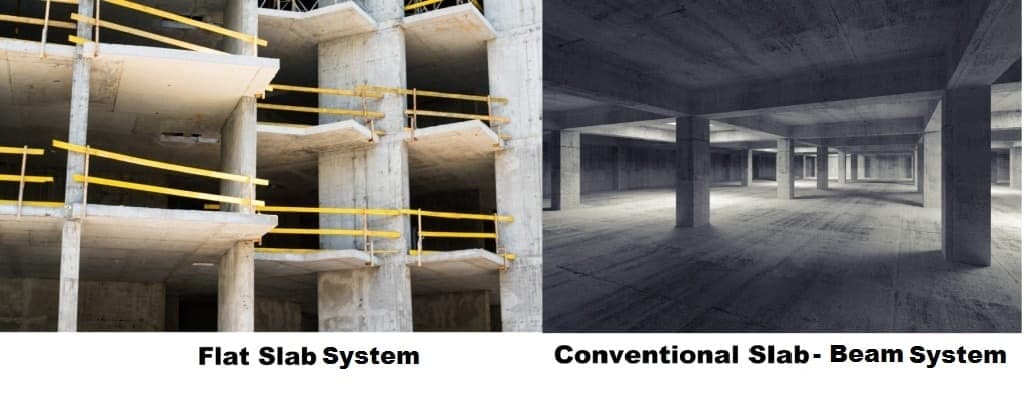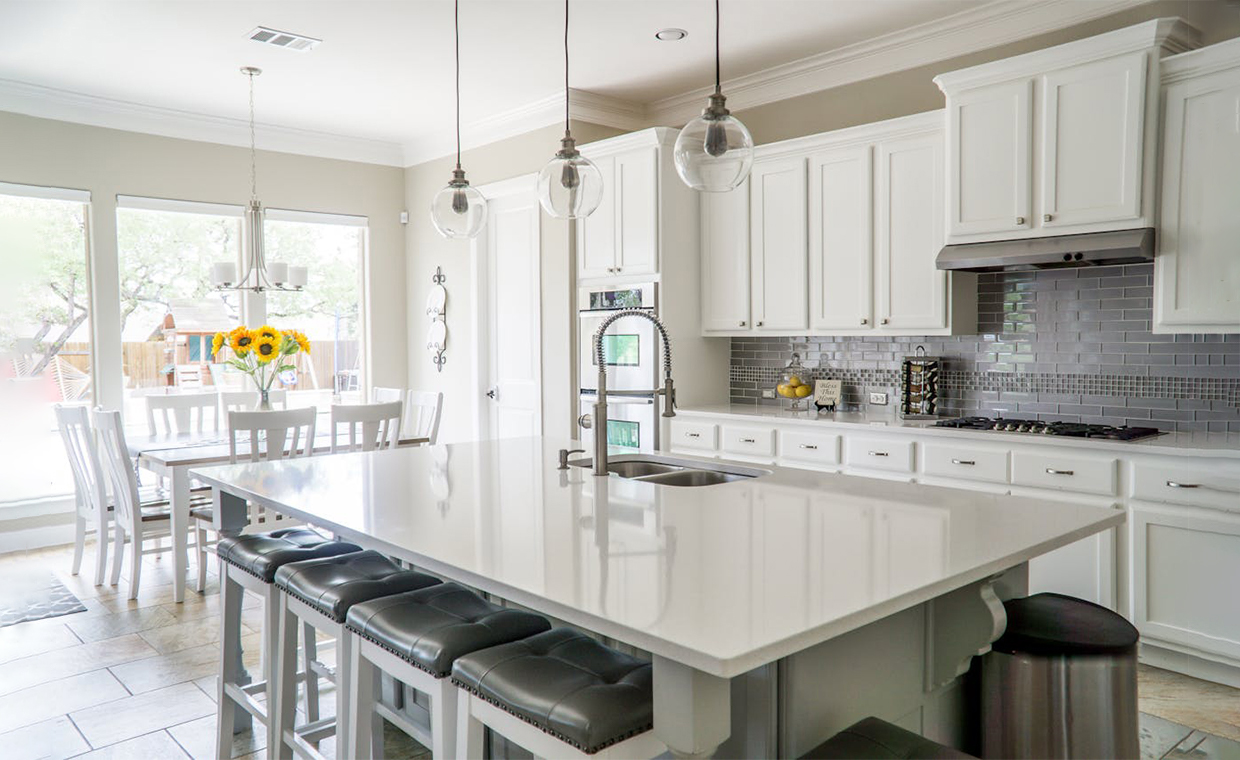
The main difference between flat slab & conventional slab-beam system is that the one is directly supported on the column while another system has a beam for support. The load is transferred directly from slab to column in the flat slab. In conventional slab-beam system, the load is transferred from slab to beam and ultimately beam to the column.

Flat Slab vs Conventional Slab-Beam System
Flat Slab System
Slab Beam System
01.
- In a flat slab system, the floor/roof consists of walls/slabs and there are no beams.
- In a slab-beam system, the floor/roof consists of beam and slab.
02.
- In flat slab system, the thickness of slab is large.
- In slab beam system, the thickness of slab is small while depth of beam is large.
03.
- It provides greater clear ceiling heights.
- It provides lesser clear ceiling heights.
04.
- Here load from slab is directly transferred to column.
- Here load from slab is transferred to beam and from beam to column.
05.
- In flat slab system, less formwork is needed.
- In slab beam system, more formwork is needed.
06.
- Form work is simple and hence not costly.
- Form work is complicated and hence costly.
07.
- Drop panel is provided above column.
- Drop panel is not needed above column.
08.
- Floor system requires lesser depth and hence there will be reduction in storey height.
- Floor system requires more depth and hence there will be increase in storey height as compared to flat slab.
09.
- Dead load of structure is less.
- Dead load of structure is more.
10.
- In flat slab system, It is easy to install sprinkler and piping and other utilities as beams are absent.
- In slab beam system, It is tricky to install sprinkler, piping and other utilities as beams are present.
11.
- Flat ceiling is available which gives attractive appearance.
- Flat ceiling is not available for flat attractive appearance, you may have to do false ceiling.
12.
- Illumination is better as beams are absent.
- Illumination is not as effective as in flat slab as beam are present.
13.
- It is easier to provide acoustical treatment underside of slab.
- It is difficult to provide acoustical treatment underside of slab.
14.
- At least three continuous spans in each direction are needed for construction.
- Construction of Single slab is possible.
15.
- Ratio of Longer span to shorter span should not be more than 2.2.
- Ratio of Longer span to shorter span has no limitation.
16.
- Live load shall not exceed three times the design dead load.
- Live load has no relation with design dead load.
17.
- In flat slab system, minimum thickness of slab is 125 mm.
- In slab beam system, minimum thickness of slab is 100 mm.
18.
- Reinforcements are commonly provided in two layers.
- Reinforcements are commonly provided in one layer.
19.
- It is less resistant to earthquake as it is less flexible than slab beam system.
- It is more resistant to earthquake as it is flexible than flat slab system.
Must Read:
What is a Structural System?
Difference Between Framed Structure and Load Bearing Structure
Difference Between Precast & Cast-in-situ































